Going to college is an expensive endeavor. Tuition is expensive enough. Add on the costs for:
- books and supplies
- housing
- transportation
- medical needs
- food
Of course, the surest way to save money while attending college is to attend a school in an affordable college town. Fortunately for students looking at colleges in the state of Arkansas, saving money on the day-to-day expenses is easier than in many other places in the United States.
Methodology:
To determine our list of the 20 most affordable college towns in Arkansas, we began by compiling a list of every college town in the state. Then, we turned to Sperling’s Best Places to gather information regarding the cost of living in each town. We considered average costs of:
- housing
- food
- transportation
- healthcare
- utilities
- entertainment
We compared the overall cost of living to the national average. To a lesser extent, we also considered quality of life factors such as:
- crime rates
- available amenities
- public transportation.
Newport
Arkansas State University, Newport
Cost of Living: 29.5% lower than the national average; 13.9% lower than the state average
The town of Newport is home to Arkansas State University—Newport. It’s a great place to enjoy the qualities of “Small Town America.” It’s also a short drive from big city conveniences. Newport’s approximately 7,800 residents enjoy a cost of living that is nearly 30% lower than the national average. It’s almost 14% lower than the state average. Students interested in living off campus will be happy to hear the average cost of housing in Newport is a mere 33.7% of the national average. Typically, a studio and a one-bedroom could each be rented out for less than $500 per month. Also coming in under the national and state averages are:
- healthcare
- utilities
- transportation
- entertainment.

Walnut Ridge
Williams Baptist University
Cost of Living: 27.2% lower than the national average; 11.6% lower than the state average
“City of Walnut Ridge: Where Abbey Road Meets the Rock N’ Roll Highway!” The small town is located:
- a 30-minute drive from Jonesboro
- an hour-and-a-half from Memphis
- and two hours from Little Rock
Walnut Ridge is home to three major highways along which the likes of Johnny Cash, Elvis Presley, Jerry Lee Lewis, and Roy Orbison used to play regularly. Today, this charming Arkansas town offers its 5,300 residents:
- affordable housing
- a busy local calendar
- lots to do
Walnut Ridge is nationally known for its great water fowl hunting. Falling below the national average costs are:
- healthcare
- housing
- utilities
- transportation
- entertainment.
Blytheville
Arkansas Northeastern College
Cost of Living: 26.2% lower than the national average; 10.6% lower than the state average
Established as a lumber mill town, which later became a center for cotton growing, Blytheville is today a strong economic base for agri-business and steel production. And, of course, Arkansas Northeastern College. Students and full-time residents of Blytheville enjoy a cost of living that is more than 26% lower than the national average. The biggest categories for lowered cost of living include:
- healthcare (15% lower than the national average)
- housing (66% lower)
- transportation (28% lower)
Typical costs for a studio apartment in Blytheville hovers around $441 per month. A one-bedroom averages $519 per month.
Pine Bluff
University of Arkansas, Pine Bluff; Southeast Arkansas College
Cost of Living: 25.3% lower than the national average; 9.7% lower than the state average
Though it’s the 10th largest city in Arkansas, the small city of Pine Bluff ranks as the state’s fourth most affordable college town. It’s home to Southeast Arkansas College and University of Arkansas, Pine Bluff. It’s perhaps most famous for the Pine Bluff Arsenal, a large facility where chemical weapons are destroyed. Well below the national average is the cost of
- food
- healthcare
- utilities
- entertainment
The city’s housing costs average 27.2% lower than what is typical in Arkansas. For example, the average cost for a studio apartment in Pine Bluff is $533 per month. A one-bedroom averages only $20 more.
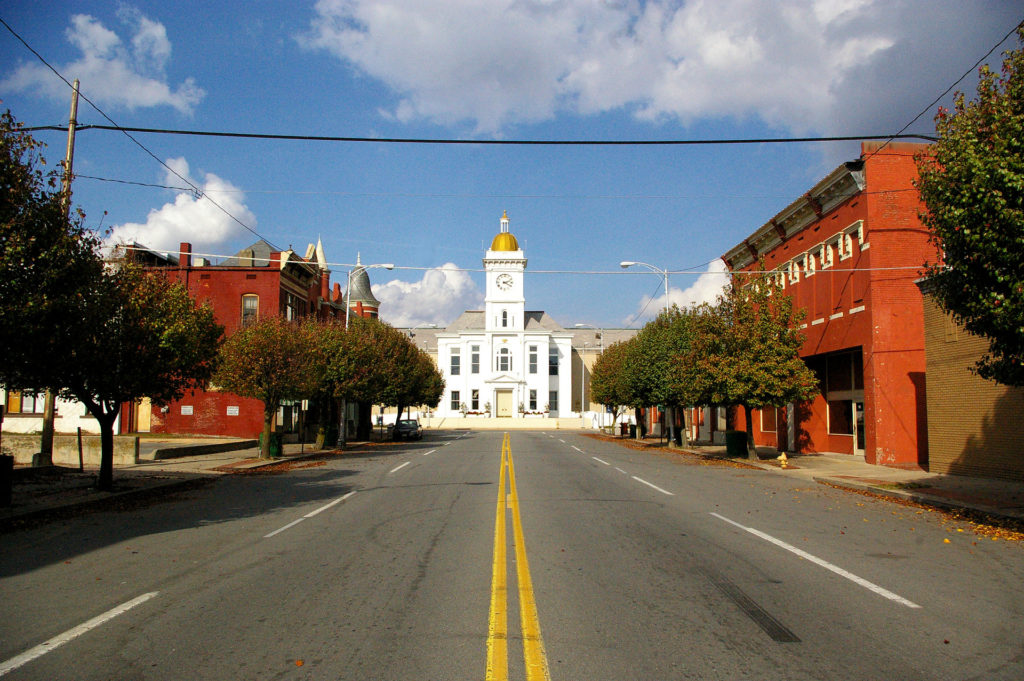
Clarksville
University of the Ozarks
Cost of Living: 25.2% lower than the national average; 9.6% lower than the state average
The scenic small town of Clarksville is situated between the Arkansas River and the foothills of the Ozark Mountains. Clarksville is best known for its local peach farms and outdoor recreation. The overall cost of living in Clarksville is well below both the state and national averages. This is great news for full-time residents and students at University of the Ozarks alike! This is especially true for the categories of:
- healthcare
- housing
- transportation
These costs average 17%, 50%, and 33% lower than the national norm, respectively.
Camden
Southern Arkansas University Tech
Cost of Living: 24.9% lower than the national average; 9.3% lower than the state average
The small town of Camden, Arkansas is historically significant. It was first a French trading post, then the “Queen City” of the steamboat era, and finally a significant location during the Civil War. Camden today is a typical Midwest small town and home to Southern Arkansas University Tech. Living here is remarkably affordable, and an impressive 25% lower than the U.S. average. Full-time residents and students are likely to save the most money in the categories of:
- housing
- transportation
- healthcare
Meanwhile, average costs for food, utilities, and entertainment average just below or on par with the national norm.
Arkadelphia
Henderson State University, Ouachita Baptist University
Cost of Living: 24.4% lower than the national average; 8.8% lower than the state average
Home to approximately 11,000 full-time residents, the small town of Arkadelphia boasts an overall cost of living that’s nearly 25% lower than the national average. It’s almost 9% lower than the state average. Like most of Arkansas, Arkadelphia’s lowest cost-of-living categories are:
- healthcare
- housing,
- transportation
Most notably, a studio and a one-bedroom in Arkadelphia can each be rented for under $500 per month. Arkadelphia has two universities. It’s home to an impressive collection of 1840s historic mansions and still-booming farm and timber industries.
Harrison
North Arkansas College
Cost of Living: 24.3% lower than the national average; 8.7% lower than the state average
Known for its annual hot air balloon races and the Crawdad Days Music Festival, the small town of Harrison, Arkansas is home to North Arkansas College. Living in Harrison is quite affordable. The overall cost of living averages a mere 76% of the national cost of living. The biggest factor in these numbers is housing. In Harrison, the average home price is just over $95,000. A one-bedroom apartment can usually be rented for under $500 per month. Also costing less than the national norm are:
- food
- healthcare
- utilities
- transportation
- entertainment.

Batesville
Lyon College
Cost of Living: 22.2% lower than the national average; 6.6% lower than the state average
Batesville, Arkansas may be the quintessential Midwestern small town. This town is a large regional manufacturing and distribution hub. It’s home to Lyon College, a liberal arts school. Because of its location near the Ozarks, Batesville offers its residents lots of outdoor recreational opportunities, including:
- multiple parks
- caves and caverns
- hiking trails
Most of Batesville’s cost-of-living categories average well below the national average. One notable exception is local food costs, which average .4% higher than the state average and only 1.5% lower than the national average. Also, worth mentioning is the fact that Batesville is located in a dry county — so at least all of one’s money won’t be spent on alcohol.
Monticello
University of Arkansas at Monticello
Cost of Living: 21.9% lower than the national average; 6.3% lower than the state average
Though it is home to fewer than 10,000 full-time residents, Monticello is one of southeast Arkansas’ largest towns. Students at University of Arkansas at Monticello have lots to do during their free time, including braving the haunted Allen House or enjoying nearby Lake Monticello. And with an overall cost of living averaging nearly 22% less than the U.S. average, students should have plenty of extra cash to enjoy the nearby happenings.
Paragould
Crowley’s Ridge College
Cost of Living: 21.7% lower than the national average; 6.1% lower than the state average
A former railroad town, the small city of Paragould is best known today as the home of Crowley’s Ridge College. The four-year Christian liberal arts school’s slogan is “The college that feels like home!” Paragould residents enjoy an overall cost of living that’s nearly 22% lower than the U.S. norm. Some costs hover right on par with the national averages:
- food
- utilities
- entertainment
However, money is saved in categories like:
- housing (48% lower than the national average)
- transportation (24% lower)
- healthcare (13% lower).
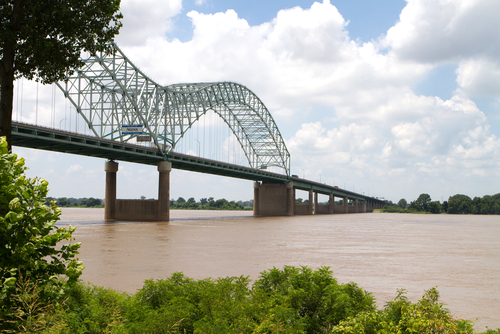
West Memphis
Arkansas State University, Mid-South
Cost of Living: 21.6% lower than the national average; 6% lower than the state average
Though it’s located directly across the river in Arkansas, the small city of West Memphis is considered part of the greater Memphis, TN area. West Memphis is home to Arkansas State University—Mid-South. As such it enjoys a cost of living more expected from a college town. For example, housing in West Memphis averages a whopping 62% lower than the national average. Still, there are some slightly higher costs (though still below the norm). These categories include:
- food, healthcare
- utilities
- transportation
- entertainment.
These drive up the overall cost of living so that West Memphis is only 22% lower than what is typical in the U.S.
Magnolia
Southern Arkansas University
Cost of Living: 19.8% lower than the national average; 4.2% lower than the state average
The small town of Magnolia is known for two main things:
- the World’s Largest Charcoal Grill
- the annual Magnolia Blossom Festival, which hosts the World Championship Steak Cookoff
Magnolia is also home to Southern Arkansas University, a four-year public university. Students at SAU have a charming small town to call home. They also enjoy a low cost of living (which hopefully leaves a little room in the pockets for some local steak!). Magnolia’s overall cost of living is nearly 20% lower than the rest of America. It’s just over 4% lower than the rest of Arkansas. The biggest factor in this cost of living difference is housing, which averages only about 64% of the national norm. For example, SAU students looking to live off campus are likely to find a studio apartment for about $460 per month. A one-bedroom apartment goes for about $560 per month.
Fort Smith
University of Arkansas, Forth Smith
Cost of Living: 19.8% lower than the national average; 4.2% lower than the state average
Fort Smith is located among the mountains of western Arkansas, near the Oklahoma border. It’s home to the Fort Smith campus of University of Arkansas. Fort Smith residents are surrounded by nature and good air quality, so outdoor pastimes are popular. Life is made even more comfortable by a cost of living that’s almost 20% lower than the national average. As with most of the other places on our list of the most affordable college towns in Arkansas, the biggest factor in this cost difference is housing. At 43% lower than the U.S. average, housing costs in Fort Smith translate to:
- a studio apartment for $562 per month
- a one-bedroom apartment for $606 per month
- a median home price of $115,000.
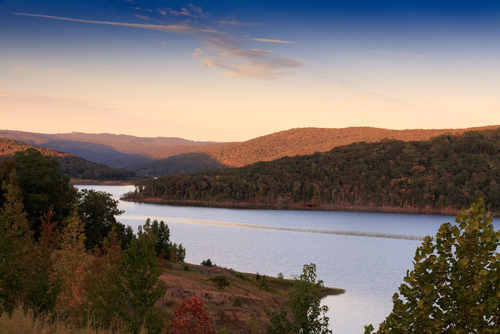
Russellville
Arkansas Tech University
Cost of Living: 19.4% lower than the national average; 3.8% lower than the state average
Russellville, in which Arkansas Tech University is located, is a mecca of natural sights and outdoor pursuits. The town borders both Lake Dardanelle and the Arkansas River. It’s home to:
- Mount Nebo State Park (hang gliding, anyone?)
- Lake Dardanelle State Park
- the protected wetlands making up Bona Dea Trails & Sancturary
Cost of living in Russellville averages just 80% of the national norm. The lowest cost-of-living categories are housing, transportation, and healthcare.
North Little Rock
University of Arkansas, Pulaski Technical College; Shorter College
Cost of Living: 19.3% lower than the national average; 3.7% lower than the state average
As part of the Little Rock capital-city complex, the mid-size city of North Little Rock is home to:
- Shorter College
- University of Arkansas-Pulaski Technical College
North Little Rock has a lot to offer its residents. The city has just about any capital-city amenity one could wish for. Additionally, there are plenty of healthcare options. This contributes to the fact that healthcare costs in North Little Rock average 13% lower than the national norm. Overall, living in North Little Rock costs almost 20% less than the United States average.
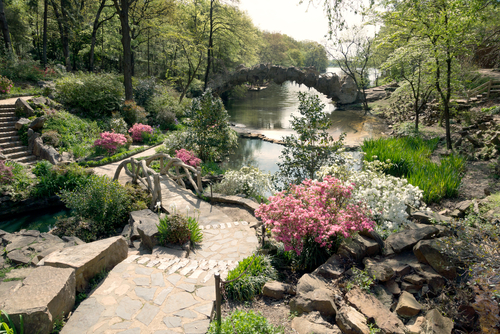
Mountain Home
Arkansas State University, Mountain Home
Cost of Living: 18.6% lower than the national average; 3% lower than the state average
Beautiful Mountain Home, Arkansas is home to Arkansas State University-Mountain Home. It’s situated in the southern Ozarks and surrounded by beautiful natural landscapes. Residents and students in Mountain Home can enjoy:
- swimming at Cooper Park
- the Twin Lakes
- camping in the nearby mountains
In terms of cost of living, Mountain Home is 18.6% lower than the national average, with the biggest savings coming in the categories of:
- transportation
- housing
- healthcare.
Searcy
Harding University
Cost of Living: 17.7% lower than the national average; 2.1% lower than the state average
The town of Searcy has a large student population. It’s home to Harding University, a Christian liberal arts school and the largest private university in the state. It’s a college town through and through, and boasts a lower cost of living to prove it. Average costs for transportation and healthcare are both well below the U.S. and state averages. Right on par with the national norm are costs for:
- food
- utilities
- entertainment
Most notably, the average cost for housing is a whopping 32% lower than the U.S. average. A one-bedroom apartment can be rented here for as little as $536 per month.
Jonesboro
Arkansas State University
Cost of Living: 15.4% lower than the national average; .2% higher than the state average
Jonesboro boasts a full-time population of nearly 74,000 people, plus the student body of Arkansas State University. Besides the university, Jonesboro is known for its excellent nearby healthcare options, and a local economy which promises respectable future job growth. The city’s cost of living makes for another check in the pro column. Overall, living in Jonesboro costs about 15% less than living elsewhere in the United States. It’s .2% less than living elsewhere in Arkansas. Just about every cost-of-living category comes in well below the national average. The biggest savings having are in:
- housing
- healthcare
- transportation costs.
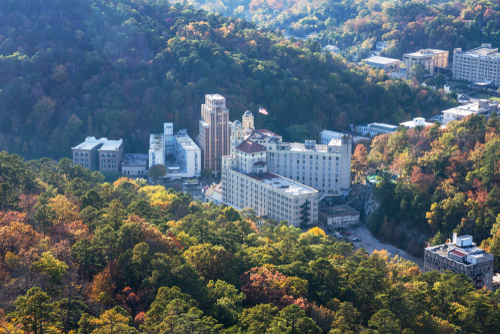
Hot Springs
Champion Christian College, National Park College
Cost of Living: 13.9% lower than the national average; 1.7% higher than the state average
Hot Springs is home to:
- Champion Christian College (a four-year Christian university)
- National Park College (a large community college)
Hot Springs is best known as the home to the springs which give the town its name. Hot Springs residents have to deal with a large tourism scene and narrow employment base which accompanies it. However, the benefits of living in a place like this include a gorgeous natural setting and tons of outdoor recreational activities. The cost of living isn’t too bad here either, averaging nearly 14% lower than the national average.
And which Arkansas college towns have the highest cost of living? Those would be:
- Fayetteville (1.1% lower than the national average)
- Springdale (8.9% lower than the national average)
- Siloam Springs (11.2% lower than the national average)
- the capital city of Little Rock (11.8% lower than the national average)
- Conway (13.4% lower than the national average).